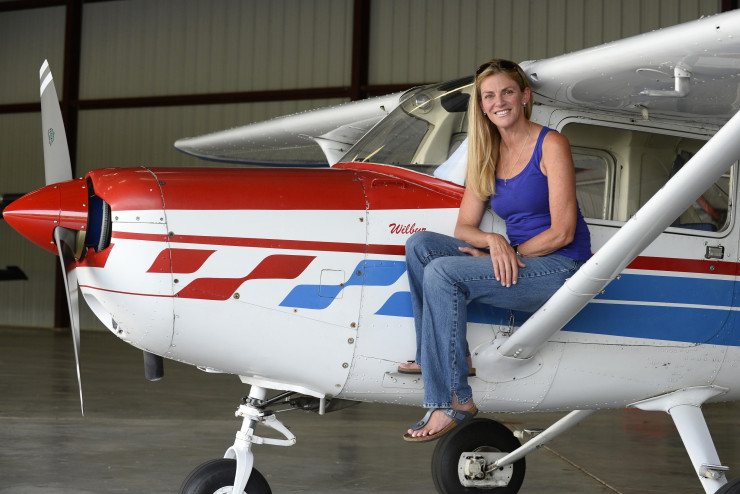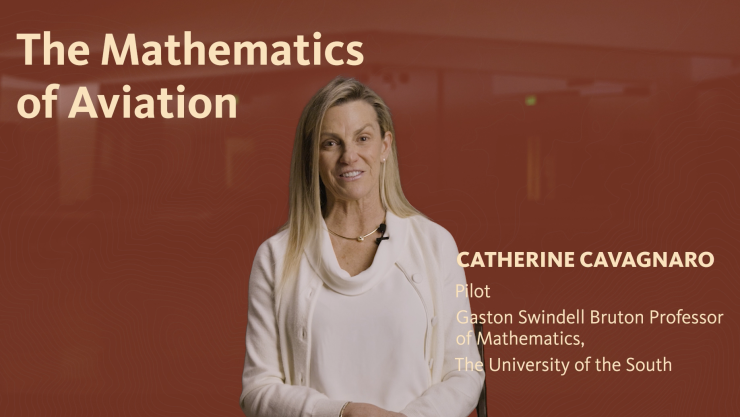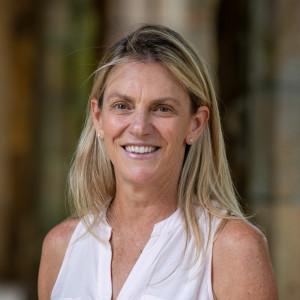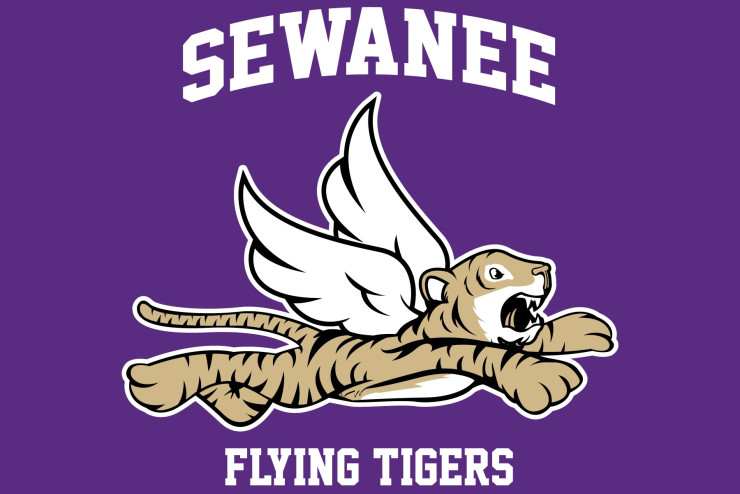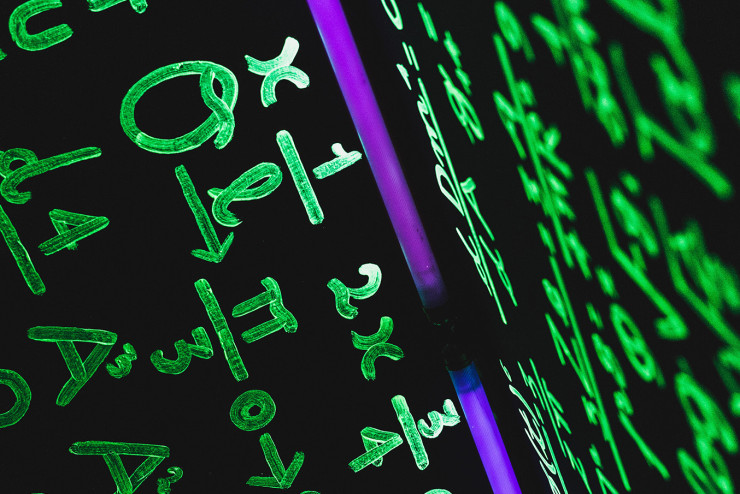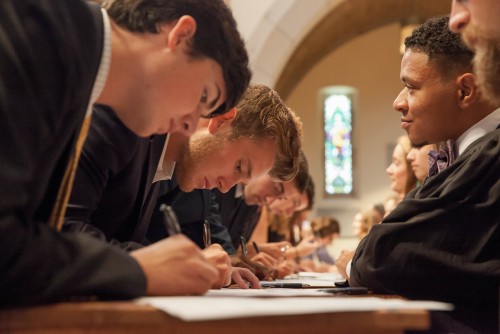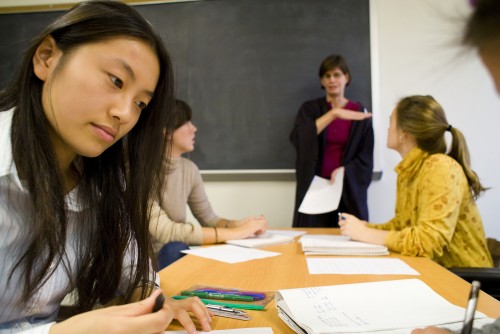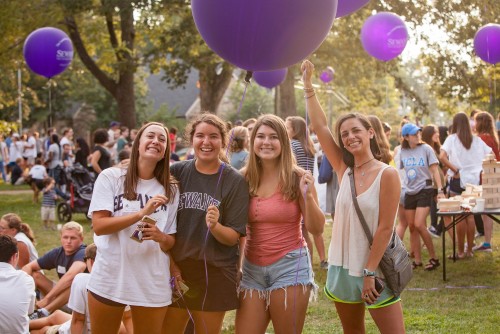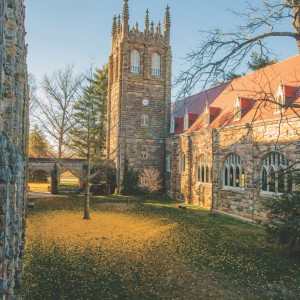The 30,000 Foot View
For Catherine Cavagnaro, flying is all about the adrenaline rush. A few years into her aviation career, the pilot and Gaston Swindell Bruton Professor of Mathematics decided that she wanted to attempt a long spin in her plane. She had gotten into aerobatics, the spectacular flying maneuvers like rolls and dives that, while not necessary for normal flight, are both entertaining and a prime source of the adrenaline burst she so craved. During a spin, her plane would plummet toward the Earth at speeds exceeding that of cars on the freeway.
“The airplane was out of control, heading straight at the ground, and it turns out that I did a 60-turn spin,” says Cavagnaro. “I didn’t realize it, but it was actually a world record.”
Cavagnaro’s journey to that moment began decades earlier when, at four years old, she took her first flight from California to her mother’s native Ireland. “I spent the entire flight just staring out at the wing and the engine wondering what made the plane fly,” says Cavagnaro. At the time, none of the major airlines had any female pilots. So when a young Cavagnaro expressed her fascination with aviation, she was told, “Maybe someday when you grow up, you can be a stewardess.”
It wasn’t the in-cabin travel experience that had captivated Cavagnaro, but rather the technical wizardry that made it possible. Cavagnaro’s father was an electronics technician who worked with the linear accelerator at Stanford University, and she had inherited his interest in all things mathematical and technical. Fast forward a few years and Cavagnaro found herself enrolling in graduate mathematics study at the University of Illinois at Urbana-Champaign, where the tantalizing prospect of flight once again entered her life—the university was also home to a flight school.
“When I found out how much it cost, it didn’t take any sort of mathematical prowess to realize that my salary as a graduate teaching assistant was not going to be sufficient to learn to fly,” says Cavagnaro. But she still found reasons to hang out at the airport, often sitting out near the runways where she could watch the planes land and take off while she did her coursework.
Cavagnaro’s teaching career ultimately brought her to Sewanee, where she noted the location of the airport on campus. Recognizing after a few years that she was going to stay in Sewanee for the long term, she decided it was time to realize her long-delayed dream. “In May of 1999, I got tenure at the University, and later that month I had my first son,” says Cavagnaro. “Then I did what anybody else would do: I walked right out to the airport and I signed up for flying lessons.”
She took lessons from Bill Kershner, a longtime Sewanee flying instructor, who took note of Cavagnaro’s background in mathematics. Encouraging Cavagnaro to connect her two passions of math and aviation, Kershner took her to the University of Tennessee Space Institute, where she had the chance to pursue research projects and some graduate classes in aeronautical engineering. “I saw that aviation ... it’s just all math,” says Cavagnaro.
Now a seasoned pilot and flying instructor herself, Cavagnaro takes joy in helping other aviators see those same connections between mathematical principles, aircraft, and flight. She writes the “Flying Smart” column for the Aircraft Owners and Pilots Association’s AOPA Pilot magazine, and regularly hears from flyers who have avoided danger or simply come to know their planes better thanks to her words.
Taking complicated concepts and sharing them with general audiences is, for Cavagnaro, a natural way to knit together her roles as an educator, a mathematician, and an aviation enthusiast. “Aviation is intellectually stimulating. It’s exciting. And it’s just been a wonderful way for me to express my mathematical self,” she says.
And even after decades in the air, Cavagnaro still sometimes has to pinch herself to check that what she sees outside her plane’s window isn’t a dream. “I look back on that four-year-old girl who was staring out at the plane wing, and there’s no way I could have predicted that here is where I would be,” says Cavagnaro. “As much as I continue to learn about the science of flight, what I love the most about flying is that it still, to this day, feels like magic to me.”
